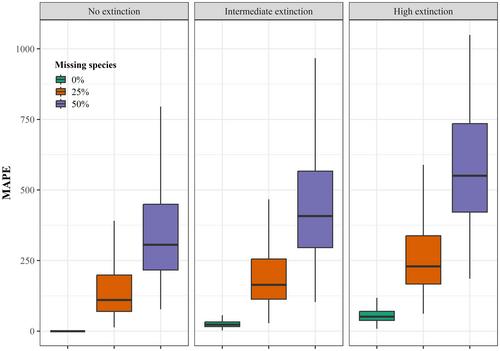Challenges in estimating species' age from phylogenetic trees
Abstract
Aim
Species age, the elapsed time since origination, can give insight into how species longevity might influence eco-evolutionary dynamics, which has been hypothesized to influence extinction risk. Traditionally, species' ages have been estimated from fossil records. However, numerous studies have recently used the branch lengths of time-calibrated phylogenies as estimates of the ages of extant species. This approach poses problems because phylogenetic trees only contain direct information about species identity at the tips and not along the branches. Here, we show that incomplete taxon sampling, extinction and different assumptions about speciation modes can significantly alter the relationship between true species age and phylogenetic branch lengths, leading to high error rates. We found that these biases can lead to erroneous interpretations of eco-evolutionary patterns derived from comparing phylogenetic age and other traits, such as extinction risk.
Innovation
For bifurcating speciation, the default assumption in most analyses of species age, we propose a probabilistic approach based on the properties of a birth–death process to improve the estimation of species ages. Our approach can reduce the error by one order of magnitude under cases of high extinction and a high percentage of unsampled extant species.
Main conclusion
Our results call for caution in interpreting the relationship between phylogenetic ages and eco-evolutionary traits, as this can lead to biased and erroneous conclusions. We show that, under the assumption of bifurcating speciation, we can obtain unbiased approximations of species age by combining information from branch lengths with the expectations of a birth–death process.


 求助内容:
求助内容: 应助结果提醒方式:
应助结果提醒方式:


